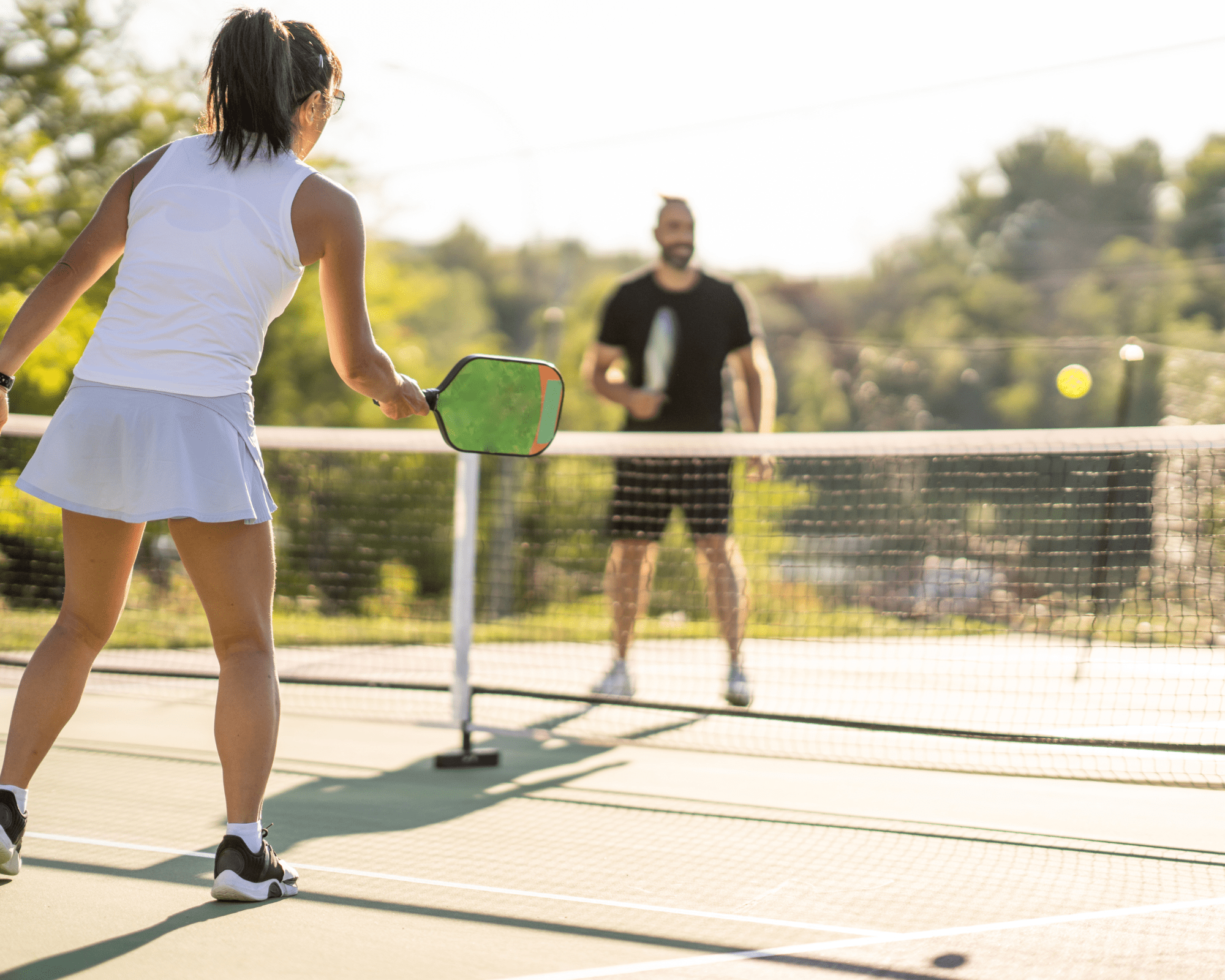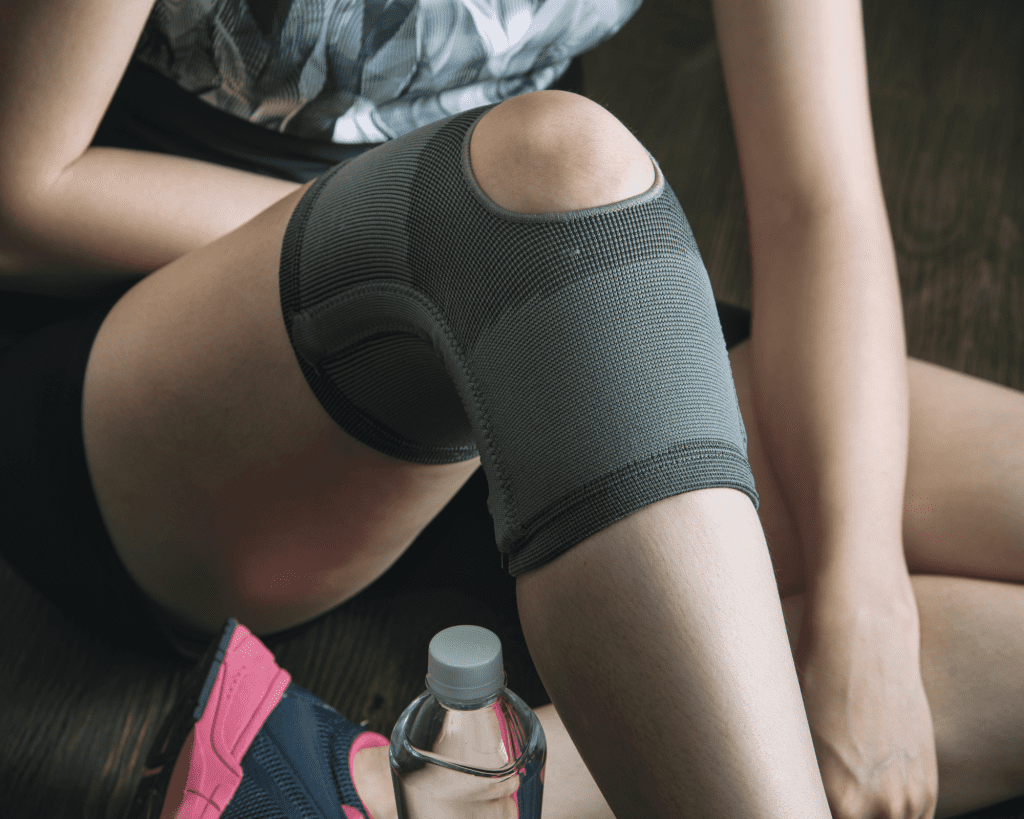Are you a die-hard Pickleball player who refuses to let anything stand in the way of your game? Perhaps you’ve recently suffered a torn meniscus and wonder if you can still hit the court. As a Pickleball enthusiast, you understand the thrill of the game and the importance of staying active. But when it comes to injuries, it’s crucial to weigh the risks before diving back into the game.
In this post, we’ll explore the question: can I play pickleball with a torn meniscus? We’ll delve into the details of a torn meniscus, the risks involved in playing with an injury, and tips for playing while managing your injury. By the end of this post, you’ll have a better understanding of how to approach pickleball with a torn meniscus so that you can continue to enjoy the game you love without sacrificing your health.
Table of Contents
ToggleWhat is a Torn Meniscus?
As a Pickleball player, it’s crucial to understand what a torn meniscus is before deciding whether or not to play. The meniscus is a piece of cartilage in your knee that acts as a cushion between your thighbone and shinbone. A torn meniscus occurs when this cartilage tears, usually due to sudden twisting or pivoting movements and often felt by a popping sensation.
There are several types of meniscus tears, including:
Radial Tears:
Radial tears are the most common type of meniscus tear and typically occur due to degeneration from normal wear and tear. They can also occur as a result of acute trauma or injury. These tears extend from the center of the meniscus to the outer edge in a straight line, and their severity can vary depending on the location and size of the tear. Radial tears can sometimes heal independently with conservative treatment like rest, ice, compression, and physical therapy. In other cases, they may require arthroscopic surgery to repair or remove the damaged portion of the meniscus.
Flap Tears:
Flap tears occur when a piece of the meniscus tears and can flip into the joint space, causing discomfort and pain. This tear often results from a traumatic event, such as a sudden twist, pivot, or changing directions. Flap tears can make it difficult to extend the knee and cause locking or catching sensations fully. In most cases, surgery happens to remove or repair the damaged portion of the meniscus.
Bucket Handle Tears:
Bucket handle tears are less common but more severe than radial tears. This type of tear occurs when a piece of the meniscus is torn in the center, causing it to displace into the joint. This displacement can cause the knee to lock in a bent position, making it difficult to straighten the leg. Bucket handle tears often require surgical treatment to remove or repair the torn portion of the meniscus.

Can I Play Pickleball With a Torn Meniscus?
The last thing you want to do is sit on the sidelines with knee pain due to an injury. However, assessing the risks involved in playing with a torn meniscus is crucial before returning to the court.
Factors to consider before playing pickleball with a torn meniscus:
-
-
The tear’s severity: Your meniscus tear will impact your ability to play pickleball. If you have a minor tear, you may be able to play with some modifications, but if the tear is severe, it’s best to avoid playing until you’ve had proper treatment.
-
-
-
Pain and discomfort: Playing pickleball with a torn meniscus can be painful, and listening to your body is essential. If you experience significant pain or discomfort while playing, it’s best to take a break and rest your knee.
-
-
-
The danger of further damage: Playing with a torn meniscus can increase your chance of further damage. Sudden movements, pivoting or jumping, can worsen the tear and cause more damage to your knee.
-
Risks involved in pickleball with a torn meniscus:
-
-
Aggravation of the tear: Playing pickleball with a torn meniscus can aggravate it, making it more painful and severe.
-
-
-
Increased danger of falling: Pickleball involves quick movements and direction changes, which can increase the risk of falling and further injuring your knee.
-
-
-
Delayed healing: Playing with a torn meniscus can delay the healing process, making it more difficult to recover fully.
-
When to avoid playing pickleball with a torn meniscus:
-
-
Immediately after the tear: It’s essential to rest and allow your knee to heal after sustaining a meniscus tear. Playing pickleball immediately after the injury can worsen the tear and increase your chances of further damage.
-
-
-
After surgery: If you’ve had surgery to repair your meniscus tear, you’ll need to recover before returning to pickleball. Your doctor will guide you on when it’s safe to resume physical activity.
-
Ultimately, the decision to play pickleball with a torn meniscus is personal. However, it’s important to consider the risks involved and seek medical advice before returning to court. Modifying your gameplay or taking a break from pickleball may be necessary to allow your knee pain to heal fully.

How to Manage a Torn Meniscus While Playing Pickleball
If you’ve received medical clearance to play pickleball with a torn meniscus, several tips can help you stay safe and avoid further potential injuries:
-
-
Warm-up properly: Proper warm-up exercises can help prepare your muscle groups and joints for the demands of pickleball. This can help reduce the possibility of further injury to your knee.
-
-
-
Modify your gameplay: Certain pickleball moves, such as sudden pivots and jumps, can strain your knee and worsen your meniscus tear. Consider modifying your gameplay by avoiding these repetitive movements or reducing the intensity of your play.
-
-
-
Use proper equipment: Using proper footwear and a knee brace can help protect your knee during pickleball. Knee braces can help reduce the impact of falls and protect your knee from further injury.
-
-
-
Listen to your body: Pain or discomfort during pickleball is a sign that you may be aggravating your meniscus tear. Take a break and rest your knee if you experience significant pain or discomfort.
-
-
-
Follow a rehabilitation program: Following a rehabilitation program recommended by your doctor or physical therapist can help improve your knee strength.
-
-
-
Take breaks: Resting your knee periodically during pickleball can help reduce the hazard of aggravating your meniscus tear. Consider taking frequent breaks to allow your knee to rest.
-
-
-
Communicate with your partner: Communication with your partner can help. Let your partner know if you need to modify your gameplay or take a break to rest your knee.
-

How to Reduce Your Risk of a Torn Meniscus?
While a meniscus tear can happen suddenly due to a fall or sudden knee twisting, several factors can increase your chances of developing these common injuries. Taking steps to reduce your chances of a torn meniscus can help you stay on the court and avoid the pain and recovery time associated with this injury. Here are some tips to help reduce your risk of a torn meniscus:
-
-
Strengthen your leg and hamstring muscles: Strong muscles can help support and stabilize your knee joint, reducing the chance of sudden twisting and injury. Incorporate exercises that strengthen the quadriceps, hamstrings, and calves into your workout routine.
-
-
-
Stretch regularly: Regular stretching can help improve your flexibility and reduce the risk of sudden twists and sprains. Incorporate stretches for your legs, hips, and knees into warm-up and cool-down routines.
-
-
-
Wear proper footwear: Court shoes can help support your feet and ankles, reducing the chance of falls and sudden twists. Choose shoes that provide good arch support and have a non-slip sole. Improper footwear can lead to ankle sprains, soar calf muscles, and plantar fasciitis.
-
-
-
Modify your gameplay: Modifying your gameplay can help reduce the risk of sudden twisting and prevent injury. Avoid sudden pivots and jumps, and consider reducing the intensity of your play if you’re at a higher risk for injury.
-
-
-
Use proper technique: Proper technique can help reduce the stress on your knees and your opportunity for injury. Work with a coach or watch instructional videos to learn proper Pickleball techniques.
-
-
-
Take breaks: Taking breaks during gameplay can help reduce the chance of overuse injuries. Consider taking frequent breaks to rest and stretch your legs and knees.
-
-
-
Maintain a healthy weight: Carrying excess weight can put additional stress on your knees and increase the chance of pickleball injuries. Maintaining a healthy weight can help reduce muscle strains as well.
-
By incorporating these tips into your routine, you can reduce the prospect of a torn meniscus and stay on the court for longer. Remember to prioritize your healthy lifestyle and seek medical advice if you experience any pickleball injuries.
Can a Torn Meniscus Heal on its Own?
Whether a torn meniscus can heal on its own depends on the type and severity of the tear. In general, a meniscus tear is unlikely to heal on its own because the meniscus has poor blood flow, which limits its ability to repair itself. However, small tears on the outer edge of the meniscus, where there is more blood supply, may heal over time.
In cases where a meniscus tear does not heal, treatment may be necessary. This can include rest, ice, compression, and elevation (known as the RICE method) to reduce pain and swelling and physical therapy to strengthen the surrounding muscles and improve the range of motion. Meniscus repair surgery may sometimes be necessary to remove the damaged portion.
If you suspect you have a meniscus tear, it’s important to seek medical attention to determine the severity of the tear and the appropriate treatment. Ignoring a meniscus tear, continuing to play sports, or engaging in physical activity can worsen the tear and lead to long-term knee problems.
Conclusion
Playing pickleball with a torn meniscus can be challenging, but it’s possible with proper precautions and medical clearance. Remember to prioritize your health and seek medical advice before returning to the court. You can continue playing the game with the proper precautions and modifications while allowing your knee injuries to heal.

